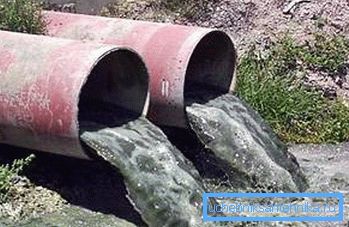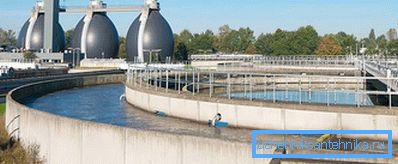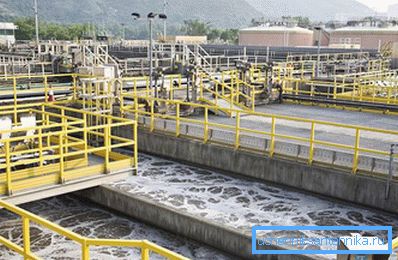Wastewater treatment - the guarantee of longevity
Why water is polluted in nature. An invaluable source of human life and all life on Earth is water. According to statistics, there is little water suitable for drinking on our planet, only 1% is fresh water of rivers and lakes from 70% of the entire water surface of the Earth. More than 90% is accounted for by salty seas and oceans, less than 5% are Arctic ice.
This 1% needs protection from pollutants from river, lake and groundwater. The cause of pollution is wastewater with detergent residues, spilled petroleum products, technical oils, drugs, acid rain.

Farms that use unprocessed manure of livestock and poultry, a huge amount of various fertilizers leached from the soil by rains and entering water bodies are a major source of pollution.
Varieties of pollution
The main types of wastewater pollution include physical (filling with insoluble materials), chemical (penetration of heavy metal salts into water), and biological (discharge of organic matter into water basins).
- Physical pollution. As a result of physical pollution, insoluble impurities of sand, clay, silt deposits, and mining dust from mines transported by winds appear in the water.
- Chemical discharges. Water is polluted by chemicals, waste from chemical plants, poultry farms and livestock farms.
- Biological pollution. Pathogens - bacteria, viruses, fungal spores, eggs, worms represent a biological threat to water resources. This is facilitated by wastewater housing utilities, forestry, fish and woodworking industry, which is particularly fraught for the population.
- The influence of warm waters. Thermal power plants, nuclear power plants are the carriers of radiation contamination. Heated streams of water affect the decrease in the amount of oxygen in water, the deterioration of the biocenosis, as a result of which pathogenic viruses and microorganisms are formed.
- Particularly alarming are emissions and wastewater from refineries (oil spills, pipeline accidents). Toxic substances that are hazardous to human health are deposited in the bottom sediments of water bodies.
Filtering methods
Wastewater is purified in various ways.
Mechanical cleaning techniques
Colloidal substances are removed with the help of gratings, sifting out of sand settling tanks, devices for trapping fats, filters and many other devices. All floating contaminants are removed and sent to treatment tanks.

Chemical purification methods
Contaminate by oxidative and reducing reactions. Undissolved impurities are removed by mechanochemical cleaning using sorption, extraction, coagulation, and flotation methods.
For disinfection of wastewater used bleach. To ensure the contact of chlorine with water, install tanks, the design resembling septic tanks. With the help of septic tanks and settlers with two tiers, the sewage sludge is fermented, dehydrated and dried. Sludge dewatering is performed by vacuum filters, filter presses and centrifuges. Dried sediments are used as fertilizers in agricultural fields.

Biological methods of purification

Biological methods of treatment are the main in autonomous treatment facilities.
The main types of wastewater pollution include physical (filling with insoluble materials), chemical (penetration of heavy metal salts into water), and biological (discharge of organic matter into water basins).
Selection of treatment facilities
When choosing mechanisms for wastewater treatment, attention is paid to the volume of wastewater, reliability, convenience and ease of use, quality cleaning indicators and volumetric possibilities. For small daily volumes (up to 100 m3) there is an extensive selection of autonomous sewage installations represented by the trademarks TOPOL, UNILOS, TOPAS, ECO-ENOT, etc.
Improving cleaning quality
To ensure a significant improvement in the quality of cleaning using flotator. With their help there is a cleansing from chemical waste, fats, dirt from laundries, organic impurities. The advantages of this equipment are:
- Reliability.
- High degree of purification.
- The elimination of the leakage of dirt during the rapid discharge of waste water.
- The presence of a sludge zone, which frees up the need for pre-cleaning facilities.
- Compactness which allows to apply the equipment in small farms.
To reduce the costs associated with the disposal of wastewater, evaporators are used, which accelerate the release of solid particles from the wastewater and the further crystallization of impurities.
Sergey Yagnov, company Servo-Yug Crimea